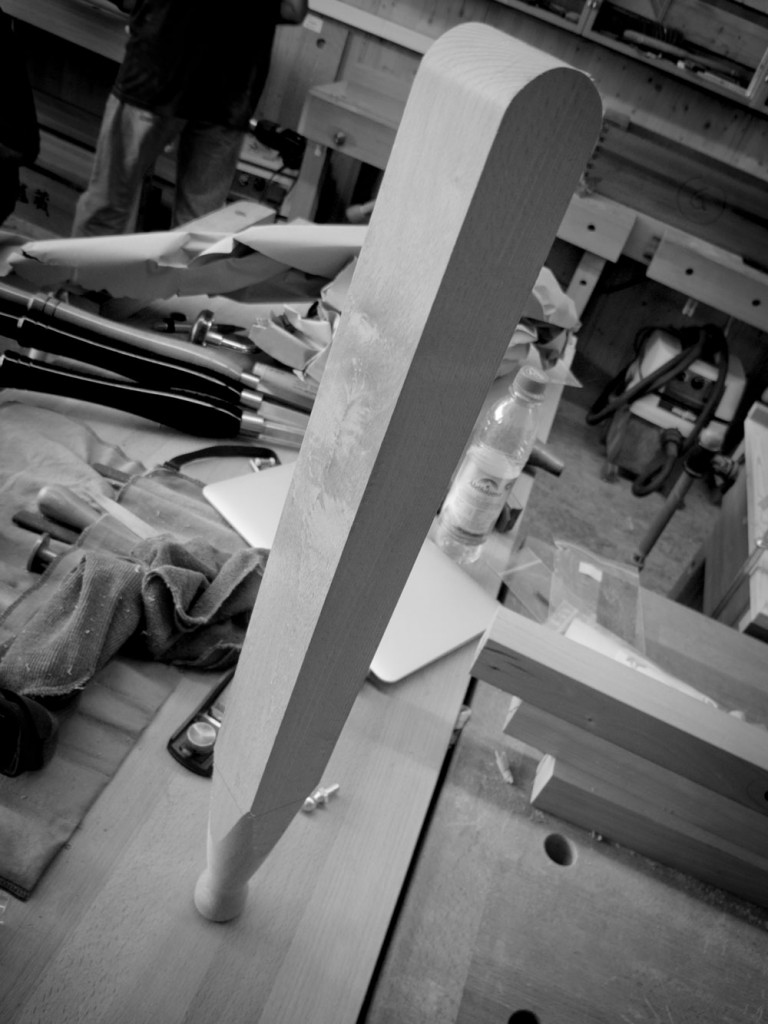We may receive a commission when you use our affiliate links. However, this does not impact our recommendations.
For the last few years, I’ve studied the world of campaign furniture and the history of the Roorkhee chair, an English form of military seating that appeared in the last days of the 19th century.
Most people have never heard of the Roorkhee. But many people have seen the chair that evolved from the Roorkhee chair – Kaare Klint’s famous “Safari Chair” of the early 1930s.
The chair is spare, comfortable and was ubiquitous in homes in the 20th century. Klint, who is considered the father of Danish modern furniture, took the design of the late-19th-century Roorkhee and simplified it.
This week I am in Germany with a class of nine students from all over Europe who are building an adaptation of Klint’s famous chair. Like Klint, we are building the chair from beech, with simple lines and nice leather upholstery.
Today we spent our time in the company’s Munich workshop turning down the dowels we need for the stretchers and cutting all the holes we need to make the chair pull itself together when one sits in it.
On Thursday, we head to a workshop dedicated to turning that is maintained by Dictum GmbH, the company that is sponsoring the class. I’ve never taught in the classroom Dictum has devoted to turning, but I do have one consolation: Most of the students have never turned chair parts so I might not look like a total dumbkopf trying to explain the process to them.
One of the saving graces during this trip has been the fact that I’m teaching the turning parts of the classes with Easy Wood Tools, which are made down the road from me in Kentucky. I’m a huge fan (I pay full price and blah, blah, blah), and it’s particularly gratifying to see woodworkers who have never turned before take to the tools and the lathe like nobody’s business.
That, quite frankly, is reason enough to teach here. And the Weiss beer. And schnitzel. And getting to drive on the autobahn. A lot.
— Christopher Schwarz
Here are some supplies and tools we find essential in our everyday work around the shop. We may receive a commission from sales referred by our links; however, we have carefully selected these products for their usefulness and quality.










My vintage Kaare Klint Safari Chairs (made by Rud. Rasmussen Co.) now reside in an apartment on Fifth Street and Covington, KY. As if moving by unseen forces, they are slowly migrating toward the WIA venue. This may be a sign…
Off topic, but to Chris…
In Anarchist, you mentioned using a carpenter’s hatchet for ripping boards. I have never seen this done. Would you consider posting a video on this topic some time? I enjoy your work a lot… thanks!!!
Nice work. It’s been interesting to see those other locations, though sad to hear about the flooding. That turning room full of One-way lathes looked great.
Being largely of German ancestry the Weiss beer, schnitzel and efficient roadway engineering also sound good. 🙂
Have a great trip.
-B
I’m not saying I did stand on my chair swinging a beer, but I’m not saying I didn’t.
Naughty boy! You used the veritas tapered reamer in a drill press! Yer naught suppozda do that!
Actually if the speed is low enough and you don’t get it too hot, it should be fine. My drill press goes down to something like 162 RPM. Its agonizingly slow, but perfect for things like this. I had trouble on my first roorkhee chair keeping the reamer straight with a brace. It doesn’t cut quite like an auger bit and there is a tendency to pull to a side and get off center. The drill press would make quick accurate work of that.
I have a question: What is the best way to adjust the tapered reamer and tapered tenon cutter so they are the same exact taper. My first time I didn’t get them close enough and they didn’t match up well. I do have them matched well now, but I wonder what the best way to go about that might be.
Dinger, is this what you’re mean by “tapering jigs for dowels”?
http://www.leevalley.com/us/wood/page.aspx?cat=1,180,42288&p=54835
-Shawn
Looks like fun! I found the Veritas dowel making jig on their site, but I’m wondering where you obtained the tapering jigs for the dowels? This may be a silly question, but I’ve read where ship wrights of old used tree branches that are similar to a part they were trying to make in order to have long grain throughout the piece. I also saw that you noted in other Roorhkee posts that it’s important for the strength of the chair to use pieces with perfect or near perfect straight grain. Is there a reason not to use straight, clear branches for the dowels? I suppose the only reason might be that as reactionary wood, it would cause the dowels to warp. Anyway, mach Spaß in Deutschland!